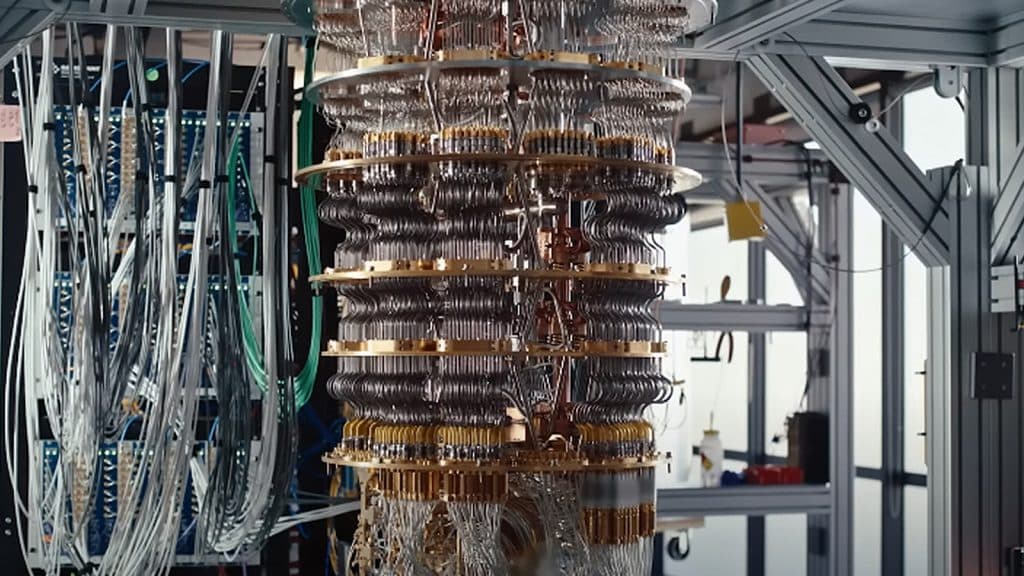Google’s new quantum computer chip, named Willow, is able to run computations so complex that it would supposedly take the world’s fastest supercomputers the entire lifetime of the universe to complete.
Because of this, experts in quantum computing believe that the ‘multiverse’ theory must be real, a la the Marvel Cinematic Universe.
It sounds too fantastic to be true — not to mention extremely complicated. Here’s what the concept means in layman’s terms, and what it could mean for the future of quantum computing.
Experts say Google’s quantum computer could prove the multiverse theory
Google first revealed Willow, a quantum computing chip, on December 9, 2024. Quantum computers replace the standard binary code that other systems use — a series of ones and zeros — with the laws of quantum physics, which allow them to perform computations much faster.
Willow boasts two major achievements in the quantum computer space. First, it has the ability to reduce errors exponentially — an issue the field has been trying to solve for the last 30 years.
Second, Willow can perform standard benchmark computations in a fraction of the time it would take modern supercomputers. According to a statement from Google, Willow was able to make one such computation in under five minutes — something that would take its competitors 10 septillion years to complete, far longer than the expected lifetime of the known universe.
But how is this possible? The founder and manager of Google’s Quantum Artificial Intelligence Lab, Hartmut Neven, says that Willow might be able to achieve such quick and accurate computations by using parallel universes as a resource.
Willow, Google’s quantum computer, looks like a massive chandelier – but it has the potential to change the world of AI as we know it.
Essentially, experts like Neven theorize that Willow must exist in all of these universes at once, and is able to compute so efficiently by working together with itself in alternate timelines.
“Quantum computing is the first technology that takes the idea seriously that we live in a multiverse,” he explained in a 2024 Ted Talk. “It can be seen as farming out computations to parallel universes.”
“…if you were to treat this as a quantum system, then it can branch into many configurations simultaneously, and we have to keep track of all those trajectories to make an accurate prediction of what states we are going to see in the future.
“So, the equations of quantum mechanics tell us at any time, any object, myself or the world at large exists in a superposition of many configurations.”
So, what does this mean for AI? Much like how ChatGPT took over the AI space in 2023, Willow’s powerful quantum computing could spark a similar revolution in the field — if it manages to be as user-friendly and easily accessible as its competitor.
“When it comes to AI, I think it’s likely that future AI systems will continue to make heavy use of conventional computing, but we’ll see more hybrid systems with quantum processors incorporated into the system,” California Institute of Technology’s director of the Institute for Quantum Information and Matter, John Preskill, said in an April 2025 interview with CNBC.
“Quantum computers will provide a lot of training data, which can then be used to solve quantum problems by conventional AI much better than we’ve been able to do in the past.”
The multiverse theory isn’t new whatsoever, and geniuses like Neven at Google are far from the first to tout it in highly-public ways. In fact, the ‘father’ of quantum computing, British physicist David Deutsch, is an avid proponent of the multiverse theory, which he laid out in his 1997 book ‘The Fabric of Reality.’
“In interference experiments there can be places in a shadow-pattern that go dark when new openings are made in the barrier casting the shadow,” he wrote.
“This remains true even when the experiment is performed with individual particles. A chain of reasoning based on this fact rules out the possibility that the universe we see around us constitutes the whole of reality. In fact the whole of physical reality, the multiverse, contains vast numbers of parallel universes.”
It looks like Marvel might have been onto something with its ‘Multiverse of Madness’ — and even the Time Stone, because in 2012, scientists discovered a new theoretical state of matter called ‘Time Crystals.‘
Content shared from www.dexerto.com.

